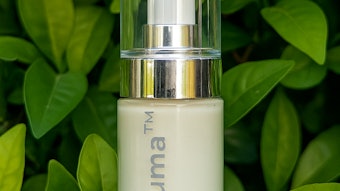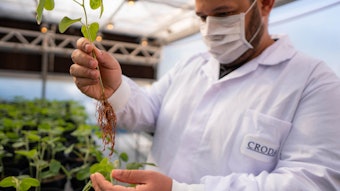- Several drivers have rapidly evolved the thinking and approach of the scientific community as related to animal testing.
- Improved reproducibility and consistency in lot-to-lot test data for highly correlated results are among the compelling business cases for use of in vitro test methods.
- In vitro tests can be strategic tools that can significantly impact product development timelines and economic outcomes.
The drive to refine, reduce and/or replace animal-based testing of beauty products has significantly accelerated the demand for validated in vitro studies that can serve as viable replacements for animal testing. Spurred on by European Union (EU) legislation passed in March 2009 that banned animal testing of cosmetic ingredients and formulations, the move to in vitro testing formats is further being accelerated by the high development costs and lack of assay (procedures or methods for testing and/or measuring activity/efficacy) robustness that are typical of animal-based testing—such as the long-established Draize test to evaluate the acute toxicity of beauty products. By using in vitro assays in lieu of the traditional and often controversial practice of animal testing, brand owners and their manufacturing/testing partners are realizing benefits characterized by the four Rs: reduction, refinement, replacement and reproducibility.
With the drivers of cost reduction, performance optimization and a changing culture of acceptability around animal testing all aligned, it stands to reason that in vitro assay formats will only gain greater acceptance by regulating bodies that ensure product safety.
A Time for Change
During the last century, in vivo testing emerged as the preferred method to evaluate toxicity and to provide information on the potential dangers to humans from chemicals and personal products. Until recently, animal testing was a common “gate” that most products had to pass through before being available for human use. However, several drivers have rapidly evolved the thinking and approach of the scientific community as related to animal testing.
First, the ever-mounting pressure for brand owners to cut their costs and timelines to market is forcing researchers to find more efficient assays. The costs to care for laboratory animals and to develop and conduct validated animal studies are substantial, and limit the ability of young companies to compete. Particularly within the arena of drug or druglike product development, the timeline to develop and complete good manufacturing practice compliant pre-clinical studies can add years to a market launch date. Thus, current market forces will reward those who find effective ways to do more at reduced cost and without sacrificing consumer safety.
A second factor is the changing regulatory culture around the acceptability of animal testing, particularly as applied for cosmetics and personal care products. Following the lead of the U.K., which banned animal testing in 1998, the EU joined ranks in March 2009 enacting a ban on all animal testing of cosmetic ingredients and formulations.
Supporting this ban, the EU simultaneously passed legislation preventing the sale of all beauty products and ingredients that use animal testing in development, regardless of the availability of in vitro standards.
These EU rulings are influencing regulatory policy in other countries, as well as thought leader opinion regarding the continued acceptability of animal testing for product development. Because of the changing regulatory landscape, globally-focused companies find themselves increasingly incentivized to find proven in vitro alternatives for their traditional animal-based platforms.
The third factor driving the increased use of in vitro test methods is the availability of new assay and screening technologies that allow in vitro test methods to offer substantial benefits over previously employed in vivo platforms. With the technical advances of the last 30 years, today’s in vitro test methods demonstrate superior efficacy as defined by the four Rs.
Compelling Business Case
In vitro testing offers a compelling business case for use. Improved reproducibility and consistency in lot-to-lot test data yields highly correlated results. The opportunity to administer assays in a high throughput format means a quicker turn-around time for results—typically 48 hours versus two to three weeks with traditional in vivo method. These efficiencies reduced costs sufficiently to enable testing of smaller amounts of more substances at an earlier stage of development.
The technical advances afforded by modern in vitro test methods make it feasible to reduce the number of animals used for testing, refine the historical data provided by in vivo testing methods, replace existing in vivo tests with less expensive, faster in vitro approaches and ultimately deliver a level of reproducibility that cannot be obtained with animal-based test methods. Several in vitro assays have been proven to achieve these goals.
Alternative Testing Primer
A prime example of a proven in vitro alternative to in vivo testing is the use of the Irritection Assay System as a substitute for the animal-based Draize test. Since the 1940s, the Draize test has used ocular and dermal testing in a live rabbit to gauge acute toxicity of beauty products. The Irritection Assay System is a standardized and quantifiable alternative model that detects and predicts the ocular or dermal irritation of potential raw materials or compounds.
For the testing of new products, the Irritection Assay System (a standardized, quantitative in vitro test method) can be specifically applied to evaluate the ocular and/or dermal irritation caused by a test sample. During the testing process, a proprietary protein solution is placed into the wells of a Petri dish to mimic the proteins in the eye, and a membrane disk is placed upon the protein layer in the well. Different volumes or dilutions of test sample are incubated on the membrane, the membrane is observed for deterioration and the remaining material in each well is mixed and tested for the degree of turbidity (a measure of the degree to which transparency is lost) against a standard curve through optical density. Comparison of the density scores allows for the calculation of an irritancy score.
At the early stage of product development, an in vitro assay such as the Irritection format can be used to determine whether or not testing in animals is necessary. In the instance where the Irritection results are positive for irritation or corrosion, there is no need to prove this again in an animal model. The product can either be discarded or it can be reformulated and re-evaluated using the Irritection test format. This practice reduces the total number of animals used in the research phase of product development. Additionally, there is a time and cost savings afforded by the early determination of a product’s irritancy score. Working toward the same decision point in animal studies is significantly more time-consuming and expensive.
Replacement of animal tests occurs when an in vitro assay is deemed acceptable as an equivalent alternative to the animal test. The Corrositex toxicology test is an excellent example of an in vitro assay replacement for animal testing. The test determines the dermal corrosive potential of chemicals and chemical mixtures and replaces a dermal corrosivity rabbit test. In the Corrositex testing system, a glass vial filled with a chemical detection fluid capped by a proprietary bio-barrier membrane, which is designed to mimic the effect of corrosives on living skin. Corrositex measures the time required for a test article to pass through a hydrated collagen matrix and supporting filter membrane. The results, expressed as a break-through time, correlate well with rabbit dermal corrosivity tests. Consequently the Corrositex test has been recognized as an acceptable replacement for the analogous animal test by a number of agencies—including the U.S. Food and Drug Administration.
Improve Reproducibility
A final significant benefit of in vitro testing is the high lot-to-lot reproducibility and consistency of test results. Many examples of variability have been noted when animals are used in testing. In fact, the biggest criticism of the Draize test is that it is considered unreliable and imprecise—the range of dermal responses between test animals extends from no effect to a very drastic skin irritation that includes necrosis. Studies suggest that the Draize test is only effective as a crude tool to distinguish irritants from non-irritants. With the introduction of validated in vitro models, such as those already mentioned, more consistent and reproducible testing is possible.
In conclusion, in vitro test methods deliver enhanced reproducibility and consistency relative to animal testing, and are, consequently, gaining greater acceptance as strategic and necessary tools to reduce, refine and replace the use of animals in product testing.
As global brand owners strive to deliver regulatory-compliant products to market in ever shorter time frames, in vitro methods are not only viable alternatives to animal testing, they are strategic tools that can significantly impact product development timelines and economic outcomes of the companies that use them.
Brian Dell is the associate director, biology, at Celsis Analytical Services—an international provider of innovative life science products and laboratory services to the pharmaceutical and consumer products industries.










